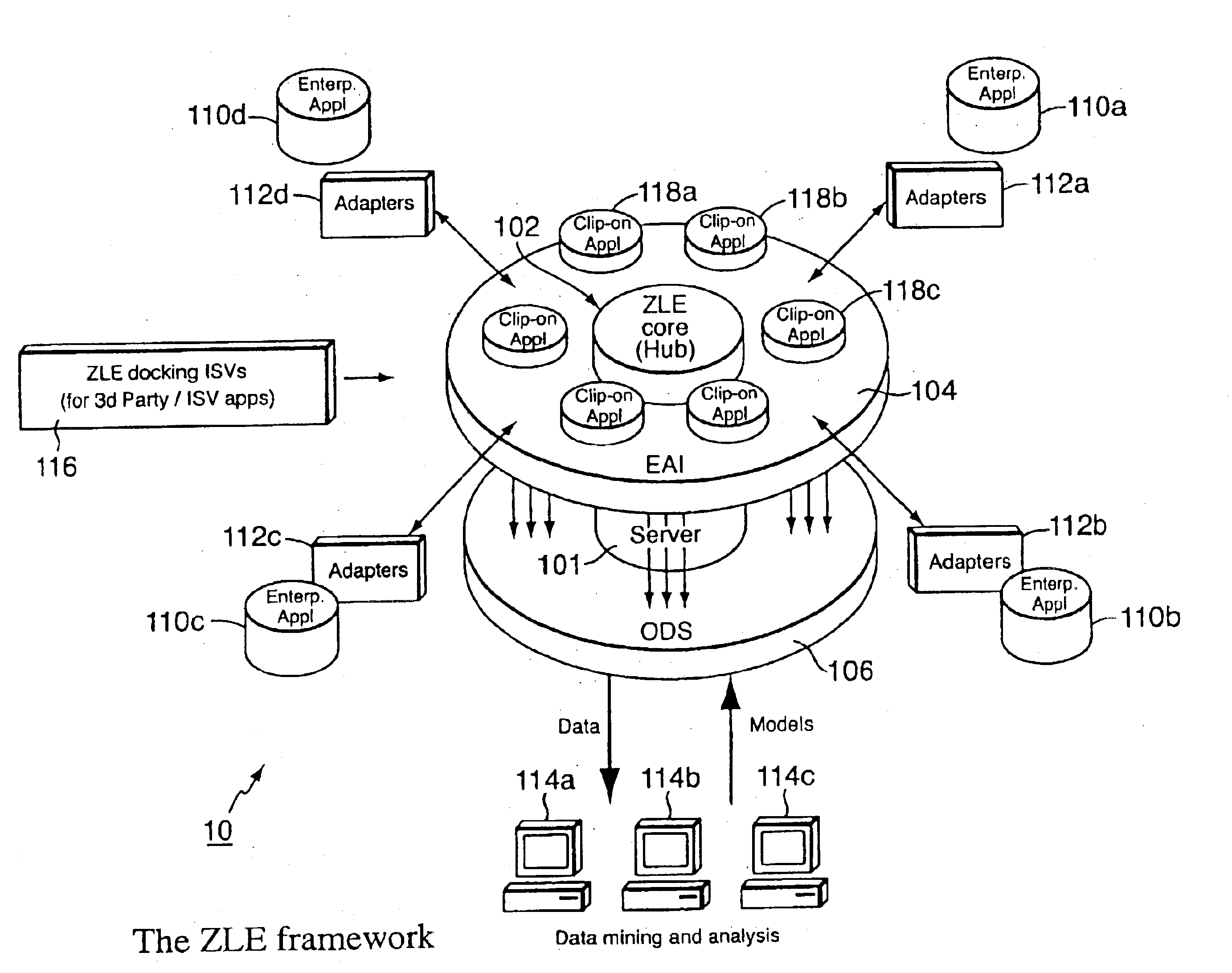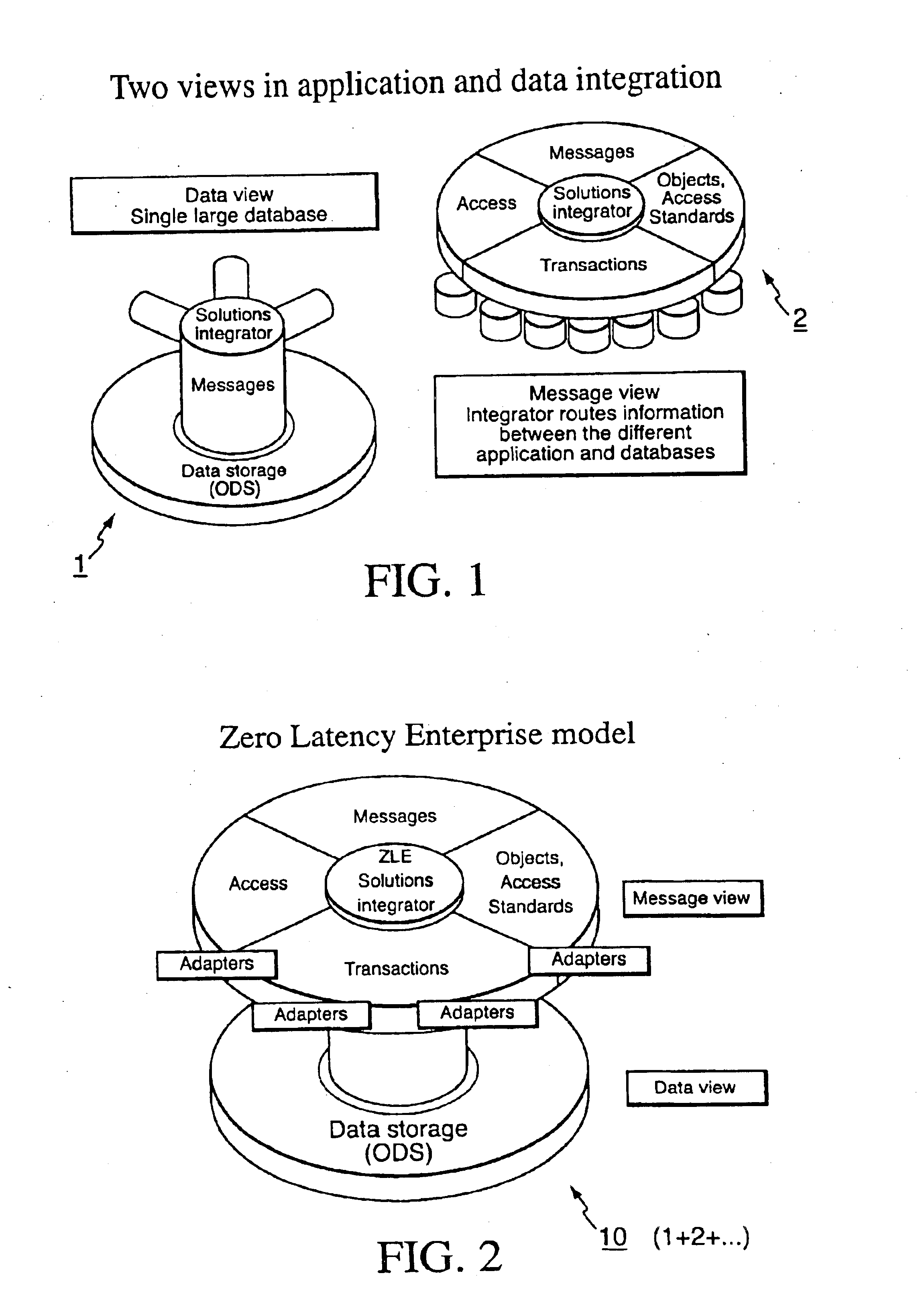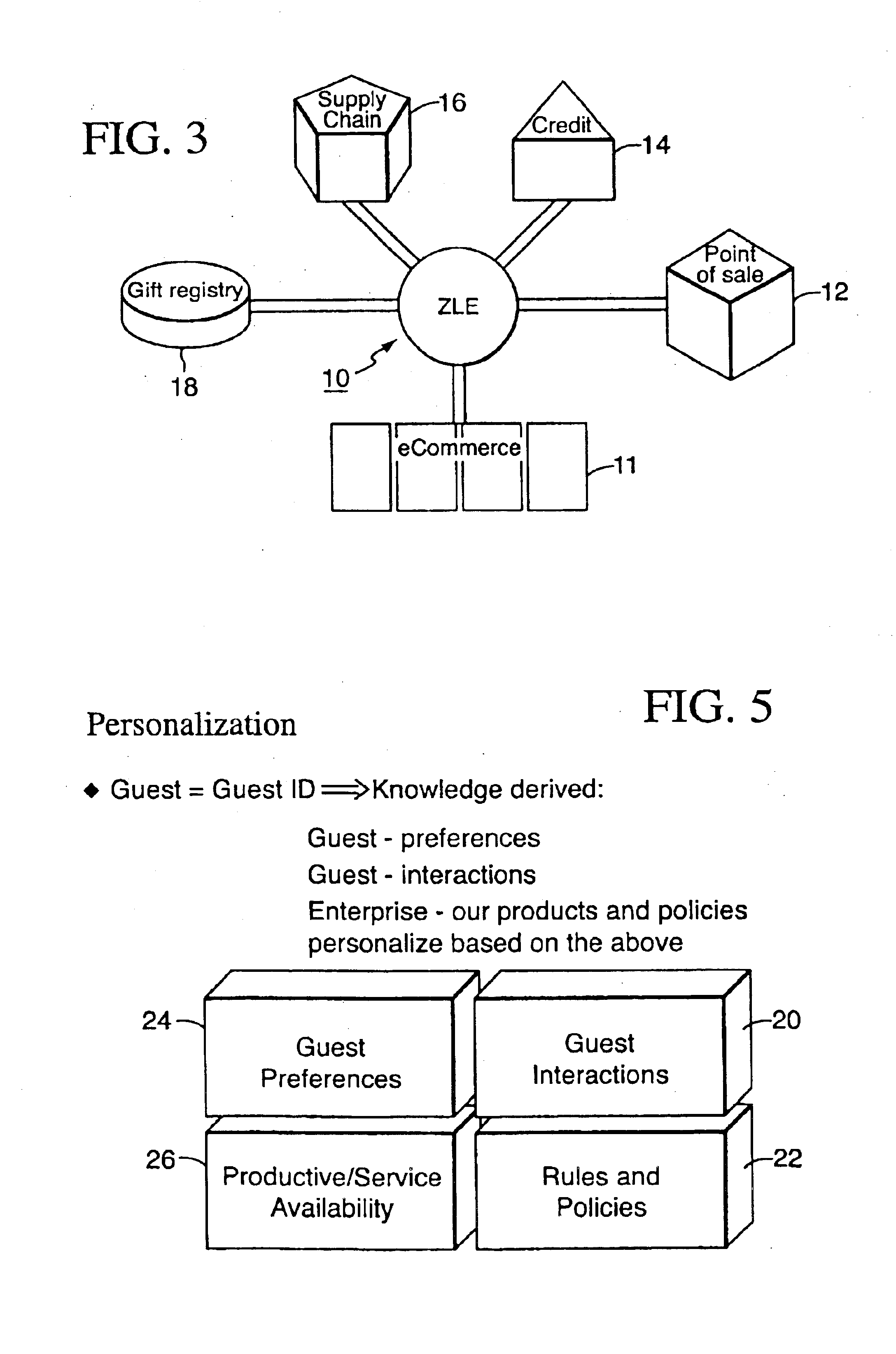Framework, architecture, method and system for reducing latency of business operations of an enterprise
a business operation and business technology, applied in the field of information technology (it) infrastructure of an enterprise, can solve the problems of large amount of information in an organization, difficult to meet system integration requirements, and difficult to integrate requirements, and achieve the effects of reducing business transaction latencies, and reducing latency
- Summary
- Abstract
- Description
- Claims
- Application Information
AI Technical Summary
Benefits of technology
Problems solved by technology
Method used
Image
Examples
Embodiment Construction
[0036]The present invention relates to information technology (IT) and, specifically, to reducing business operations latencies in an enterprise through an adaptive IT infrastructure that enables a zero latency enterprise (ZLE). As a functional and architectural strategy, the invention contemplates a ZLE framework with a hybrid functionality that is fashioned by the merger of enterprise application integration (EAI), dynamic real-time operational data warehousing, transaction processing and monitoring, data mining and analysis and a feedback mechanism. (See: FIG. 2 for the ZLE model). The feedback mechanism provides an automatic feedback of results, produced from the data mining and analysis, to the business transaction paths. The invention further contemplates the ZLE architecture, a multilevel architecture that supports the ZLE framework. This scheme enables the enterprise to integrate its services, applications and data in real time. In other words, it enables the enterprise to r...
PUM
 Login to View More
Login to View More Abstract
Description
Claims
Application Information
 Login to View More
Login to View More - R&D
- Intellectual Property
- Life Sciences
- Materials
- Tech Scout
- Unparalleled Data Quality
- Higher Quality Content
- 60% Fewer Hallucinations
Browse by: Latest US Patents, China's latest patents, Technical Efficacy Thesaurus, Application Domain, Technology Topic, Popular Technical Reports.
© 2025 PatSnap. All rights reserved.Legal|Privacy policy|Modern Slavery Act Transparency Statement|Sitemap|About US| Contact US: help@patsnap.com



